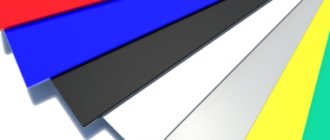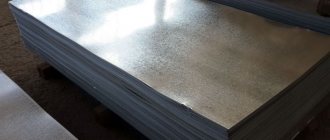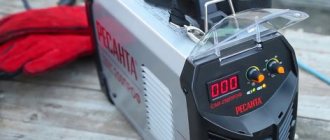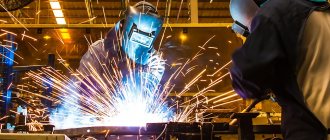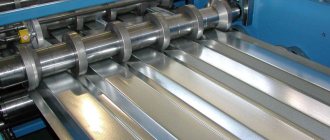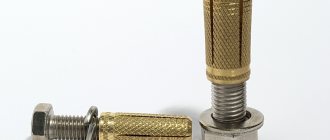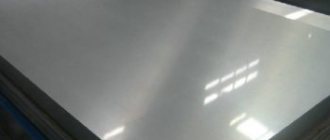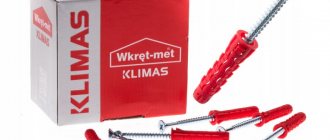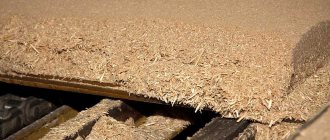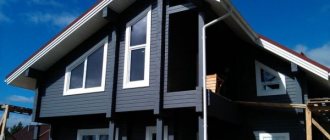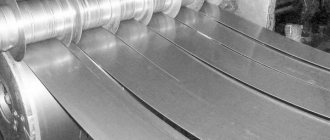Galvanized steel sheet is a type of rolled metal, a steel sheet coated with a thick layer of zinc to protect against corrosion.
The most resistant, lightweight and economical material with high anti-corrosion characteristics is considered to be galvanized steel sheet or galvanized sheet steel . This material is widely used for the manufacture of roofing elements, ventilation ducts, as well as drainpipes, etc.
Description of galvanized sheet
Regardless of the size of the galvanized sheet, at the time of creating products at the plant, preference is often given to metal marked ST08PS.
In this case, the abbreviation “PS” means the presence of semi-quiet steel in the body. The quality of this type of raw material is very high, which puts it much higher than boiling or semi-boiling metals.
Depending on the needs of production or individual orders, the introduction of other classes of steel is not excluded:
- Art. 1.
- 08KP.
- 08PS.
- 08YU.
It is better to clarify all the subtleties of the characteristics of the finished product directly at the time of purchase and compare the data with the drawn up diagram of the future object.
The beginning of the mass use of galvanizing
In 1824, Briton Sir Humphry Davy suggested that the copper bottoms of wooden warships could be protected by attaching iron or zinc plates to them. In 1829, Henry Palmer, inventor of the monorail and pioneer of elevated transport from the London Dock Company, received a patent for "cut or corrugated sheets of metal." His discovery would later have a significant impact on industrial design and galvanizing. From here it’s a stone’s throw to both galvanized rolled steel and thin-sheet galvanized steel, but more on them later.
In 1836, the French company Sorel received a patent for the process of applying zinc to steel (galvanizing). Thus, almost a hundred years later, the scientific discovery of the Frenchman Melouin found its commercial embodiment. The British patent for galvanizing was issued in 1837 to politician and businessman William Crawford. It is believed that the first infrastructure facility to be constructed using galvanized iron (these were corrugated galvanized sheets) was the naval docks in Pembroke, UK, in 1844. By 1850, British industry was using up to 10 thousand t. zinc. And in 1883, the Brooklyn Bridge was opened in New York - one of the most famous and oldest bridges in the world, which is still successfully and intensively used. During the construction of the facility, galvanized cables with a total length of 14.6 thousand miles were used for the first time.
Sheet production technology
To adjust the weight of galvanized sheets, there is a special scheme that is consistent with the requirements of GOST. After processing the hot-rolled strip using modern equipment with the ability to perform acid pickling, the workpiece is sent further along the conveyor.
Volumetric machines roll out steel to a given thickness, and then the metal is sent for annealing. The final stage will be galvanizing, which can only be done using a specialized apparatus.
Important! Enterprises adhere to GOST 19904-74, deviating from the requirements generally accepted by regional authorities, products may be rejected.
Types of specimens
The assortment of goods in construction stores is large enough that you don’t have to face problems at the stage of choosing the ideal version; you should prepare for the purchase in advance.
Among the most popular and sought-after samples are sheets for purposes such as:
- For painting.
- General purpose.
- For cold profiling.
- Instances for cold stamping.
The last type of product is divided into several items, including normal, deep and very deep hoods. You can find out about the markings by looking at special abbreviations in documents or quality certificates for the product.
Search for alternatives.
In 2001, as a result of research “Bohm, S., Sullivan and JH, & Worsley, A new corrosion test for organically coated galvanized steel products. MaterialsandCorrosion" it was found that coating steel with zinc is not as effective as, for example, coating zinc with various inorganic and organic additives.
Galvalume coatings showed excellent results: zinc with a small percentage of aluminum. Compared to pure zinc, the coating had greater uniformity, increased tensile strength and excellent corrosion resistance over a wide temperature range.
In Coni, N., Gipiela, M. L., D'Oliveira, A. S. C. M., & Marcondes, P. V. P. (2009). Study ofthe mechanical properties of the hot dip galvanized steel and galvalume®. Journal of the Brazilian Society of Mechanical Sciences and Engineering" it was determined that standard zinc coating was easily degraded in a simulated carbonate-chloride environment. These findings have prompted the search for alternative roofing sheet coatings, especially for industrial areas contaminated with chlorides or carbonates.
The development of a 55% Al-Zn alloy (an organic composite material) has made it possible to increase the corrosion resistance of roof sheets several times (compared to conventional zinc). Organic composite coatings form a protective film that inhibits the steel corrosion mechanism under severe operating conditions (acid rain or the presence of dissolved salts). Moreover, a mixture of a phosphate type pigment with a calcium-containing pigment significantly inhibited the corrosion of steel in acidic environments.
Scope of application of parts
Since the sheets are quite durable, companies producing various goods are interested in purchasing such material for the production of all kinds of products. We are talking about mechanical engineering, the creation of buckets or tanks, drainage communications, roofing coverings and heating pipes.
Blanks for further processing are selected taking into account the wall thickness of the planned elements produced at the plant; the raw materials are quite convenient to store, because the influence of corrosion is minimized.
The material is not eternal, since only the top surface coating protects the metal from external factors.
Interesting fact! The effect of rust on galvanized elements from the inside can be noticed when inspecting hot water pipes in residential multi-storey buildings; over the years, such circuit elements change color and even leak.
Why is metal galvanizing necessary?
Galvanizing or galvanizing is a technological process in which metal is coated with a special zinc-containing composition. This procedure is carried out to prevent the formation of rust and oxides on various types of metal products. Due to the fact that such a coating is applied, the service life of metal products is significantly increased.
The galvanizing method has been used to protect steel from corrosion for over 250 years. Corrosion in metals is caused by their innate tendency, when exposed to air and moisture, to try to return to their original earthly form - a mineral state.
Calculation of the weight of galvanized sheet
Regardless of the industry in which galvanized workpieces are used, before starting the product manufacturing process, professionals calculate the weight of the profiles.
A special formula was developed for this stage; it looks like this: M = M1 + M2. M refers to the weight of the material, M1 indicates the weight of the steel used, M2 corresponds to the amount of zinc.
To simplify the work of employees, tables were developed; thanks to them, calculations can be made much faster, this is due to the similarity of the raw materials supplied from the manufacturer’s plant.
GOST requirements
At the time of creating sheets, professionals in their field must adhere to generally accepted laws regarding the manufacture of products.
These documents indicate important technical points, including:
- Thickness of the zinc layer.
- No torn edges.
- Areas with sagging on the surface are excluded.
- Items with mechanical damage are prohibited for sale.
All companies that care about their customers and image closely monitor compliance with GOST requirements. Employees are allocated for the work, they check the visual conformity of the product and, if necessary, carry out a number of research activities.
Hot dip galvanizing method
The most profitable, practical and popular technology. To apply a protective layer to a metal workpiece, after preliminary degreasing, it is immersed in a bath of molten zinc, after which it is removed and dried. The temperature of the zinc in the container is 450–460 °C.
The quality of the resulting zinc coating is carefully controlled. The protective layer is assessed visually, its thickness is checked (magnetic or metallographic) and the strength of adhesion to the surface (by heating, hammering, scratching).
The hot-dip galvanizing method has the following advantages:
- High mechanical strength of the protective coating.
- Zinc covers the entire area of the metal structure, including hard-to-reach places.
- The service life of the coating is up to 60 years, even when interacting with aggressive environments.
After galvanizing, the steel sheet has all the advantages of stainless metal and lends itself well to various types of processing. To further protect the surface after galvanizing, it is painted with decorative powder paint.
Galvanized steel is used to create modern lighting lanterns
Corrugated sheet
The building material is in great demand; it belongs to one of the varieties of galvanized sheets.
- When creating products, manufacturing plants are guided by another regulatory document, it is GOST 24045-94.
- Since the service life of this type of product is at a high level, it is often used for roofing; reliability and resistance to mechanical damage protects the roof of a building from bad weather conditions.
- The low price on the shelves encourages people to increasingly use corrugated sheets when constructing various fences; the transverse rigidity is quite good; the finished work has an attractive appearance due to the coating in one of the shades the client likes.
Material selection
When choosing, it is very important to inspect the entire sheet for defects, cracks, blisters, scratches, cracks, and so on. Moreover, it is better to immediately choose thicker material, since its service life is much longer.
- Diamond cutters for stone: options, features, how to choose
- LLC GC "TransStroyKomplekt" is a reliable supplier of cast iron products in Russia
Features of diamond blades for wet cutting
If you choose a polymer-coated material, its quality should also be carefully checked, otherwise there is a risk of rapid destruction.
Useful tips
When visiting a specialized store, experts recommend taking a closer look at the product labeling, which can tell you a lot.
Depending on the task at hand, a person can easily select the ideal execution option and complete his plan in the shortest possible time; working with ready-made sheets is very convenient.
It would not be superfluous to inquire about the availability of quality certificates, because only these documents will confirm the absence of possible defects in the product.
